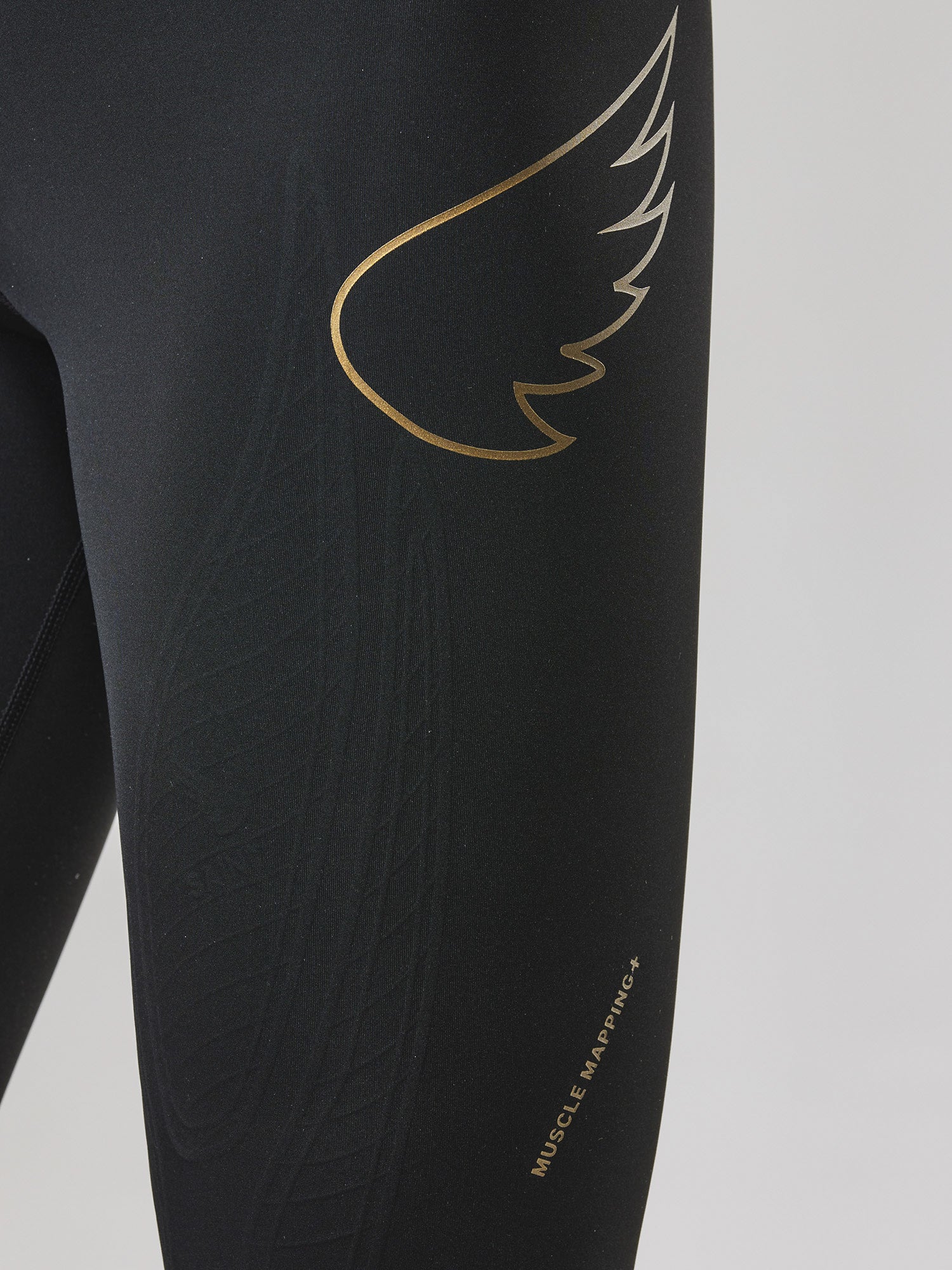The Road to Wellness: What Is a Recovery Run?
So the way to recover from a run is...more running? If you're involved with the running scene, you might have heard about recovery runs, but what are they? How does more running help your body recover?
A recovery run can be defined as a shorter, less intensive run than your normal routine that's completed within 24 hours of a tough training session. It seems like a strange concept at first, but serious runners often use recovery runs to loosen up their leg muscles and give themselves more energy.
So, should you incorporate recovery runs into your own running routine? Keep reading and we'll break it all down, and you can decide for yourself whether recovery running is for you.
What Is a Recovery Run
A recovery run is a gentle running session that's completed within 24 hours of a tough training session. The idea is to go at an easy pace and avoid exerting yourself. A good recovery run pace is similar to conversational pace.
If you constantly pull up stiff and sore after a hard workout on the track or pavement, a recovery run can help relieve that post-run discomfort. While it's not a miracle cure, many serious runners go for recovery runs after hard workouts as part of their regular conditioning.
Benefits of Recovery Runs
Injury Prevention: Recovery runs can help reduce the risk of injuries caused by overtraining. By allowing your body to properly recover between intense sessions, runners are less likely to experience burnout and overuse injuries.
Better Recovery: Active recovery promotes blood flow to your muscles, which helps to flush out metabolic by-products that accumulate during intense training sessions. This process helps to reduce muscle soreness and enhances overall recovery.
Improved Running Economy: A slow run can be a great way to focus on your running form and economy, without the fatigue of a high-intensity workout. Unlike speed workouts, you can focus on form without the distraction of fatigue.
The Mental and Psychological Benefits of Recovery Runs
Running at a more relaxed pace can often be a welcome change of pace from more demanding workouts. A casual run can help deal with both the mental and physical burnout that comes from a hectic training schedule.
Pushing hard to improve your fitness level can be great, but we all need a break from time to time. Take recovery runs as an opportunity to reconnect with your love of running in a stress-free environment. If you feel like your running motivation has dipped lately, recovery runs can are a great way to remove the demanding aspect of your running performance.
Understanding the Purpose of Recovery Runs
Recovery runs are a great way to enhance your running game. They're an effective method for enhancing the recovery process after a tough run, but when and how should you be doing them? Here's a quick rundown.
How to Perform a Recovery Run
The key to a good recovery run is to keep a relaxed and comfortable pace. The idea isn't to push yourself, but to keep up a conversational pace. Use the 'talk test' if you're not unsure about pace. This simply means that you can actively keep up a conversation without running out of breath.
If you need some hard numbers, try using about 60-70% of your maximum effort. Listen to your body as well. Only you can tell what feels comfortable, so play around until you find that sweet spot.
Choose a running circuit that's flat and doesn't have hills. If possible, opt for a forgiving running surface like grass or a dirt trail to decrease the stress on your joints.
A recovery run is usually between 20 to 45 minutes, but this depends on your current fitness level. Don't be afraid to cut the run short if you start feeling fatigued, sore or simply feel like you've had enough.
When and Why Do You Need Recovery Runs ?
A recovery run is best performed within 24 hours of an intense workout. This can be the day after a tough session, or in the evening if you ran early in the morning. It just depends on your schedule and what works best.
You might perform a recovery run the day after interval training, temp runs or long runs. Sandwiching a recovery run between hard training days is also a good way to boost your recovery. Some people go for recovery runs after a marathon or half marathon as well.
It's important to remember that recovery runs help clear out waste products in your bloodstream, like lactic acid build up, which can help reduce recovery time.
Recovery Runs as Part of Your Training Plan
Once you've decided to perform regular recovery runs, you'll need to decide exactly how they will fit into your broader training plan. We all have different training goals, so it won't be the same for everyone.
Aim for about 2-3 recovery runs per week. Ideally, you should place recovery runs on the days following especially tough training sessions. Consider placing recovery runs on your rest days, so they can become a form of 'active rest'.
At the end of the day, your overall fitness plan should be tailored to your needs. Every runner is unique, so create a schedule that fits around your life without being too demanding.
The Science of Recovery Runs: Fat Adaptation
Recovery runs can play a key role in fat adaptation, which is simply the body's ability to utilise fat as a primary source of energy during workouts. Exercising with low intensity effort encourages your body to rely more on fat as a source of fuel, as opposed to high-intensity workouts.
Improving fat adaptation can have a positive effect on endurance and sustained energy levels during longer runs. Your glycogen stores can become depleted during particularly long training sessions, and improved fat adaptation can help to improve your body's long-term endurance.
When Are Recovery Runs Not Necessary?
While recovery runs can be highly beneficial, not everyone needs them. Here are some situations where it's fine to skip the recovery runs:
If your training load is low-intensity and consists of many rest days, a recovery session probably isn't necessary.
You might choose alternative forms of recovery that can replace recovery runs. Activities like yoga, swimming and cycling share many of the same benefits of recovery runs, like increased blood flow, reducing muscle soreness and aiding recovery.
If you're dealing with an injury or fatigue, it's perfectly fine to skip the recovery runs. Sometimes it's important to prioritise rest and listen to your body.
Tips for a Relaxing Recovery Run
Unlike your intense workouts, recovery runs are meant to be stress-free and relaxing. To enhance the experience, try choosing a picturesque route that you'll find enjoyable. Better yet, bring some headphones and listen to your favourite music or podcast.
Conclusion
Adding recovery runs to your training schedule is a great way to recover from tough training sessions. Not only can they reduce muscle soreness and injury, but recovery sessions can often come as a welcome break from demanding running sessions.
If you feel like your running routine could benefit from extra recovery, follow the tips mentioned above to feel the benefits for yourself.
Frequently Asked Questions
What exactly is a recovery run, and how does it differ from regular training runs?
A recovery run is a low-intensity run that's designed to help your body recover from a hard training session. They differ from regular training runs because they're performed at a slower pace with the overall goal of staying relaxed and not exerting yourself.
Why are recovery runs considered a crucial component of a runner's training program?
Recovery runs can be a crucial component of a runner's program because they help your body bounce back from gruelling training sessions. If a runner is training for a race or marathon, those constant and high-intensity workouts can put a strain on their muscles and joints. A recovery run can loosen up their leg muscles and promote blood flow, minimising the chance of injury and muscle soreness. It also allows athletes to recover faster, so they can be ready for that next training session.
What are the physiological benefits of incorporating recovery runs into your routine?
Incorporating recovery runs into your routine can have many physiological benefits. They increase blood flow to your muscles, aiding in the delivery of oxygen and nutrients. Increased circulation helps remove waste products like lactic acids that accumulate during high intensity training sessions. Gentle, low intensity exercise can also help with overall joint mobility and reduce muscle stiffness. The rhythmic, low-stress motion can promote synovial fluid circulation, enhance joint lubrication and overall flexibility.
When should recovery runs be scheduled in relation to intense training sessions or races?
It's important to schedule your recovery runs in relation to intense training sessions. As a rule, try to perform your recovery runs within 24 hours of a hard workout for optimal results. If necessary, try to reorganise your training schedule to allow yourself a well-timed recovery session. 1-3 recovery runs a week is the number you should be aiming for.
Can recovery runs help prevent common running injuries, and if so, how?
Yes, recovery runs can help prevent common running injuries. Recovery runs can be categorised as 'active recovery'. As you move, the blood circulation in your body increases which helps to flush out metabolic by-products that are produced during hard workouts. The rhythmic motion of low-intensity runs also helps maintain joint mobility and flexibility. This helps to prevent stiffness and increase your overall range of motion. Consistent, low-intensity running also helps address muscle imbalances in your body. Regular recovery runs distribute the workload of running across various muscle groups, reducing the likelihood of imbalances that may lead to injuries.






































